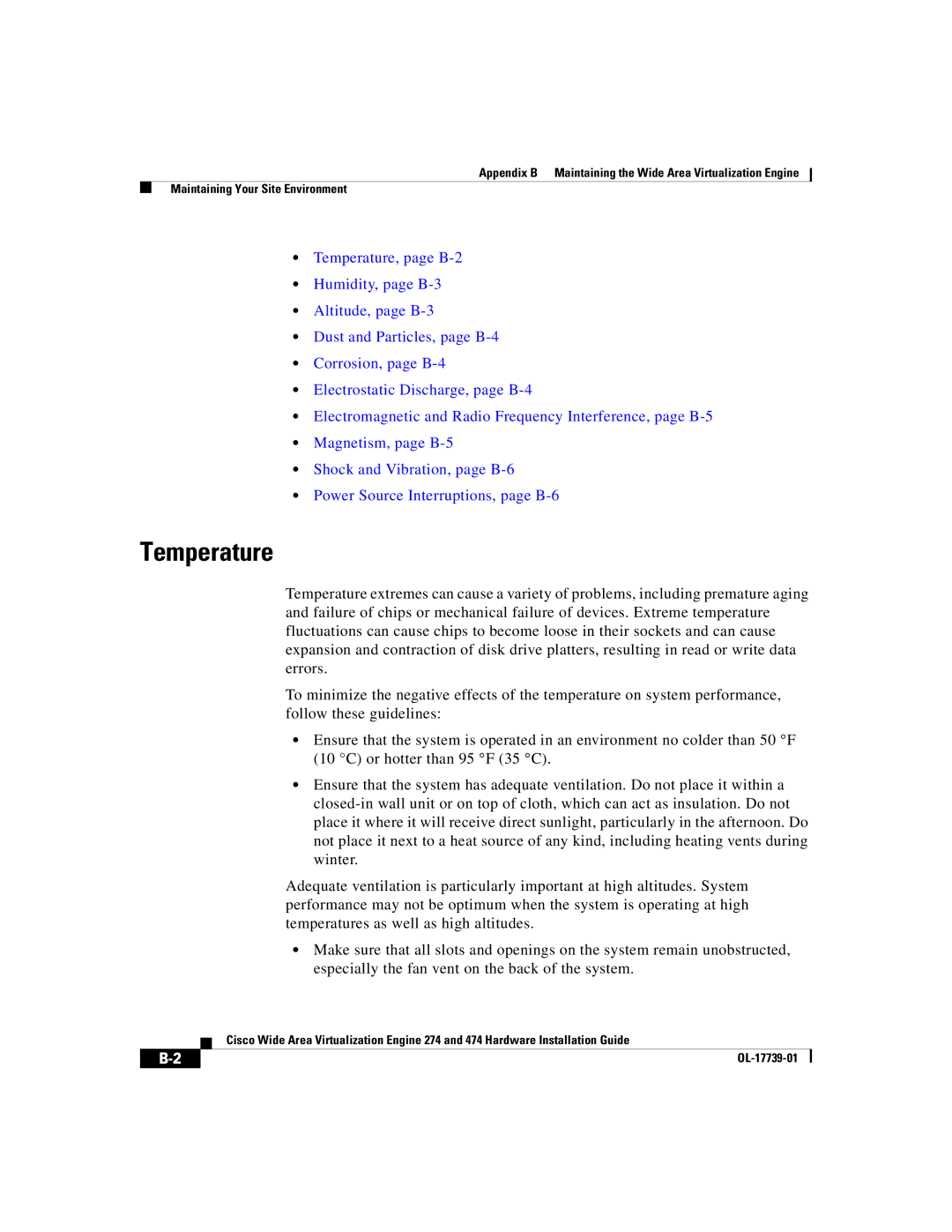
Appendix B Maintaining the Wide Area Virtualization Engine
Maintaining Your Site Environment
•Temperature, page
•Humidity, page
•Altitude, page
•Dust and Particles, page
•Corrosion, page
•Electrostatic Discharge, page
•Electromagnetic and Radio Frequency Interference, page
•Magnetism, page
•Shock and Vibration, page
•Power Source Interruptions, page
Temperature
Temperature extremes can cause a variety of problems, including premature aging and failure of chips or mechanical failure of devices. Extreme temperature fluctuations can cause chips to become loose in their sockets and can cause expansion and contraction of disk drive platters, resulting in read or write data errors.
To minimize the negative effects of the temperature on system performance, follow these guidelines:
•Ensure that the system is operated in an environment no colder than 50 °F (10 °C) or hotter than 95 °F (35 °C).
•Ensure that the system has adequate ventilation. Do not place it within a
Adequate ventilation is particularly important at high altitudes. System performance may not be optimum when the system is operating at high temperatures as well as high altitudes.
•Make sure that all slots and openings on the system remain unobstructed, especially the fan vent on the back of the system.
| Cisco Wide Area Virtualization Engine 274 and 474 Hardware Installation Guide |
|
